CHECK OUT OUR MEDIA MENTION IN NUTRITION INDUSTRY EXECUTIVE
1-April-2024
By: Lisa Schofield
Upcycled ingredients are held in esteem among a discerning consumer base. And, they present a feel-good story.
As a child, have you ever made art with popsicle sticks? This is a basic example of upcycling—using something that is a part of something else or something with potential and value that would be simply tossed after use. In this case, the stick “handle,” conventionally no longer of use after the last lick of the popsicle, finds new life as art, or as a basic tool.
Upcycled ingredients reflect the need for preserving natural resources through mindful, relevant utilization in a new manner. This is not a new concept in food and supplement industries, food derivatives, such as pectin from apples, or whey from dairy. (An example of the latter is Spare Tonic, launched in 2021 by The Spare Food Company, which utilizes whey that is a byproduct of yogurt manufacturing.)
Look at a whole fruit or vegetable. Each has numerous tiny raw materials, such as seeds, pith, skin, pit, cellulose and more. Where once these would simply be discarded, they are wending their ways into a rich diversity of products, from facial serums to plant-based foods, beverages and of course, supplements.
A concise explanation is offered by Jared Simon, president, Manitoba Harvest and Tilray Wellness (Canada): “Upcycling foods involves creatively reimagining nutritious byproducts that would otherwise be discarded into new product forms.”
And another comes from Robin Hesdahl, commercial director, NutriLeads BV, The Netherlands, who said, “Upcycling is a process that involves repurposing or transforming discarded materials into products of higher value or quality, often with a focus sustainability.”
Painting the Market
The term “upcycled” isn’t an empty trendy word—it has significant meaning—a meaning that consumers understand, align with and seek. A recent report from Fact.MR, “Upcycled Ingredients Market,” pegs this sub-sector at $275.3 million in 2022 and expected to leap profoundly to $512 million last year. Manufacturers are spending time focusing on sourcing upcycled ingredients for their products.
Hesdahl explained, “Upcycling is a confluence of a several factors, including environmental concerns and consumer interest in natural nutrition from recognizable ingredients. Formulating natural products with upcycled ingredients may give marketers a powerful way to distinguish their products, particularly among consumers concerned about their health and the well-being of the planet.”
Consumer market research from FMCG Gurus demonstrated that food waste is a hot-button issue, with 81 percent of respondents globally saying it is important to do what it takes to avoid wasting food, and nearly 50 percent changed their dietary habits to support sustainability. “A 2022 global survey by FMCG Gurus reported that six in 10 consumers found the concept of upcycling appealing and more than one-third say they are willing to pay a premium for products with upcycled ingredients,” Hesdahl said.
Another market intelligence firm, Innova Market Insights, has also investigated consumer sentiment toward foods made with upcycled ingredients. Its 2023 data showed that 43 percent of consumers found upcycled products more appealing than other products—up from 35 percent of participants the previous year (a one-year growth of 8 percent).
Hannah Ackermann, RD, director of marketing and communications, Comet Bio, Illinois, observed that upcycling certification is gaining traction with consumers. According to SPINS (Natural channel, MULO Powered by Circana, 52 weeks ending 11/5/23), the category Certified Upcycled Snacks has seen a 146.5 percent increase in sales and a 133.1 percent increase in units sold in the past year. Data from the Upcycled Foods Association shows that sales of Upcycled Certified products grew 1,046 percent over the last year. “With increased chatter about environmentally friendly choices lately, we think there’s a huge opportunity to capitalize on consumers’ waste-conscious and environmental values as a driver of product choice,” she commented.
Not surprisingly, younger generations have embraced upcycled products more so than older ones. A 2020 study conducted by First Insight found that 59 percent of Generation Z and 57 percent of Millennials were inclined to purchase products containing upcycled materials, while 47 percent of Generation X (47 percent) and 38 percent of Baby Boomers had significantly less interest in doing so.
California-based Brightseed is one of 93 companies participating in the Upcycled Food Association’s (UFA) certification program, and UFA research finds that more than 60 percent of consumers are interested in products with upcycled ingredients, according to Alina Slotnik, vice president, product marketing and strategy, Brightseed. She asserted, “This growing consumer affinity for sustainability is creating more white space for brands to innovate and deliver products made with upcycled ingredients.” She cited 2023 Allied Market Research data that projects the upcycled category will grow to $97 billion by 2031.
She added, “This presents a challenge for food companies to meet this growing market demand efficiently and effectively. A pivot into upcycling ingredients has historically not been the priority of food companies without clear paths to business impact but increased interest and sales could turn the tables for companies and consumers alike.”
In 2019, when the UTA launched its certification, Simon reported, less than 10 percent of consumers knew about these products. However, five years later, “upwards of 40 percent of mainstream consumers and 60 percent of natural shoppers are familiar with upcycled foods and have access to a variety of upcycled applications, from surplus grains in baking and pastas to crackers made from pulp. Consumers are embracing these unique applications as ethical, nutritious and often delicious choices.”
Food Waste Key Driver
Products with upcycled ingredients have an enthusiastic audience. According to Gene Bruno, MS, MHS, RH(AHG), chief scientific officer, California-based Nutraland USA, Inc. a survey of 2,405 participants in five countries found that consumers have positive associations about the concept of upcycled food. “Overall, females and younger consumers were more positive,” he noted.
Food waste is a top consumer concern, globally, driving specific and growing interest in upcycled products, according to UFA research. Nearly one-third of all food produced globally is wasted and 95 percent of consumers find the idea of reducing food waste appealing. The idea of upcycling food ingredients is attractive from an environmental and ethical perspective. Hesdahl opined, “There’s a strong basic desire to care for the environment and improve the world we live in. Food waste is a huge problem.”
According to a 2022 report from Capgemini Research Institute, 72 percent of consumers say they have become more conscious about their level of food waste and 61 percent believe food companies should do more to help reduce waste. The report also noted that nearly 2.5 billion tons of food produce goes uneaten annually. Further, the Food and Agriculture Organization finds that the cost of food waste is estimated at $1 trillion.
Upcycled Stories
As all products, physically, are the sum of their parts—raw materials—upcycled ingredients are more than just substances produced by suppliers. They represent stories of imagination and determination to enhance sustainability through adaptive reuse.
Here are just several of those stories, which are part of growing volumes.
Kerry’s (Ireland) Upcycled Certified Chicken Broth is made from chicken bones and meat that is usually discarded or sent to be rendered. To upcycle this material, the bones are cooked in water at high pressure, which creates a savory broth that has the bonus of being high in collagen protein. Last year, the company was one of three finalists for Wisconsin’s Sustainable Product of the Year for its Upcycled Certified Chicken Broth.
Other upcycled activities from Kerry include using bruised strawberries (which otherwise would not be sold) as a flavor ingredient in some of its products, as well as spent grains from beer brewing in dough and leftover fruit puree as flavorings.
Illinois-based Futureceuticals’s Coffeeberry cascara is an ingredient made from the skin of the coffee fruit known as the cascara, which has been considered a waste product of coffee processing. But it creates mycotoxins through decomposition that are released into the environment. FutureCeuticals formulated a proprietary sustainable solution that repurposes captured cascara as an upcycled ingredient.
Nutraland USA’s Miricell rice germ polyamines are naturally occurring in rice germ extract, Bruno explained. Typically, when whole grain rice is milled to produce white rice, the bran and germ layers are stripped out of the grain, and either disposed of or used in animal feed. “We create an extract with the nutrient-dense rice germ, which yields beneficial polyamines. This respects and fully uses natural resources for a sustainable future. Likewise, we offer an upcycled vitamin K1 ingredient that is made from alfalfa,” Bruno explained.
He added that based upon published research on polyamines, examples of how brand owners can use Miricell rice germ polyamines in condition-specific formulations include healthy aging, cognitive health, hormonal health, cardiovascular health and hair health.
NutriLeads’ BeniCaros is a prebiotic that Hesdahl described as a unique immune-training ingredient for foods, beverages and dietary supplements. It is sourced from upcycled carrot pomace, a by-product of carrot juicing. NutriLeads captures the fresh carrot pomace from the juicing process and begins its natural extraction process of BeniCaros, a prebiotic fiber known as cRG-I (rhamnogalacturonan-I) from carrot cell wall. BeniCaros is offered in a diverse range of formats, including powders, liquids, organic options, each available in varying concentrations of the active ingredient (cRG-I).
Brightseed’s Forager is a tool that can galvanize tremendous growth in the upcycled ingredients category by finding bioactives for upcycling. Slotnik explained, “Forager can identify and map bioactives within the natural world that weren’t used or seen before at rates exponentially faster than past modes of exploration and innovation. Not only is this AI platform able to identify and categorize current and novel bioactives hidden within plants and foods, but Forager is also able to profile all of the places we can find and source these bioactives to select the most sustainable, effective, and highly concentrated source.”
Brightseed’s Bio Gut Fiber is a novel fiber ingredient made from upcycled hemp hulls and features two bioactives, N-trans caffeoyltyramine (NCT) and N-trans feruloyltyramine (NFT). Interestingly, Slotnik noted, it was discovered by Forager, Brightseed’s computational platform. “Bio Gut Fiber is a perfect example of how AI is breaking down barriers of entry for sustainable, health-focused innovations, and discovering new health value in unexpected places,” she said. Bio Gut Fiber, for example, can be formulated into functional food, beverage and supplement applications, including but not limited to ready-to-mix (RTM) powder, ready-to-drink (RTD) beverages, bars, cereals, granolas or extruded snacks.
Manitoba Harvest utilizes upcycled hulled hemp seeds called hemp hearts, which are nutrient dense. Simon explained that sourcing its hemp hearts involves removing the hemp seed hulls through dehulling, which efficiently separates the soft center of the seed from the fibrous hull. Hemp hulls are the byproduct. “Fortunately, recent technological breakthroughs have allowed us to reimagine the potential of hemp hulls. By employing new ultra-fine milling techniques, we’ve been able to create highly palatable and fibrous applications for drinks and supplements.”
One of the original upcycled ingredients, pectin, is obtained from the byproducts of juice production, citrus peels and apple pomace, according to Julie Robey, Cargill’s (Minneapolis, MN) customer sustainability leader for food solutions Americas. “Rather than discard these leftovers, Cargill relies on them to produce pectin, a time-tested ingredient known for its thickening, gelling and protein stabilization properties.”
Pectin is often used in gummy supplement formulations, as an alternative to gelatin, said Chad Rieschl, principal scientist, Cargill. “It’s an exceptional gelling agent with unique organoleptic properties, addressing manufacturers’ functionality needs,” he described. “From a sensory perspective, pectin offers a pleasing bite, with an exceptionally clean flavor release. As a bonus, its higher melting point is a huge advantage for warmer climates.”
According to Robey, Cargill’s newest pectin production plant in Brazil is in proximity to citrus suppliers and their Rainforest Alliance-certified farms, which helps minimize CO2 emissions from raw material transport and promotes regenerative agriculture practices. “Taking sustainability one step further, the plant is powered by thermal energy generated from biomass and biogas,” she added.
Comet Bio’s Arrabina arabinoxylan prebiotic fiber, an upcycled ingredient, may help close the 2-million-ton annual fiber gap for the approximate 90 percent of Americans who don’t get enough of it daily, according to Ackermann; arabinoxylan is an FDA (U.S. Food and Drug Administration)-recognized dietary fiber that provides prebiotic benefits. “Arabinoxylan has laid dormant in plant materials left behind and processed out of our modern food system,” she commented. “Arrabina was specifically developed to fill the market need for a low-dose prebiotic fiber ingredient that can be used in a wide array of food and beverage applications.”
In addition to being fully soluble, Ackermann noted that Arrabina has a low viscosity, remains stable at low pH levels and is extremely resistant to high temperatures. Arrabina will not gel or impact texture when added as a supplement to protein powders or as a fiber boost for nutrition bars, baked goods and ready-to-drink beverages, she noted. And Arrabina works well in chocolate confectionary and can be added to help reduce sugar content.
Comet Bio’s patented upcycling technology extracts the arabinoxylan from crop leftovers including straw, leaves and shells using only steam, water and pressure for extraction. “Unfortunately, the valuable plant nutrition containing arabinoxylan has mostly been left behind in our modern food system,” she said. “Comet saw this market opportunity and utilized our patented technology to make it available in a proprietary, high purity and cost-effective form.”
Simon summarized, “Recognizing the importance of reducing our environmental footprint, retailers, governments and investors are channeling more funds into companies and technologies that make better use of byproducts, allowing us to scale and perfect byproduct-based innovation.” NIE






